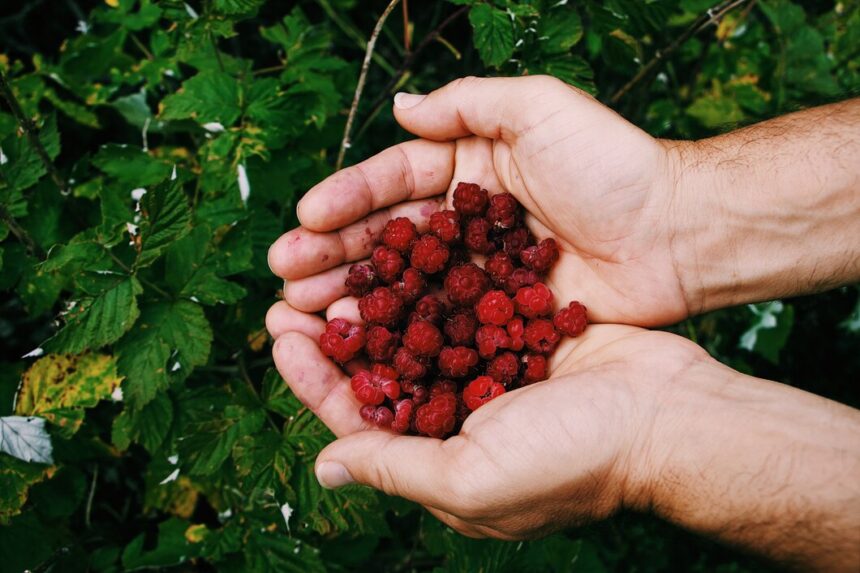Raspberry Bushy Dwarf Virus (RBDV) is a significant concern for raspberry growers as it can severely impact plant health and fruit production. Early detection is crucial for preventing the spread of the virus and minimizing crop losses. Here are ten early signs to watch for if you suspect your raspberries might have Raspberry Bushy Dwarf Virus:
- Stunted Growth: Infected raspberry plants often exhibit stunted growth, with shorter and weaker canes compared to healthy plants.
- Yellowing Leaves: Leaves may show abnormal yellowing or chlorosis, starting from the tips or edges and spreading throughout the foliage.
- Leaf Curling: Leaves may curl downwards or become distorted, which can affect photosynthesis and overall plant vigor.
- Reduced Fruit Production: Infected plants typically produce fewer and smaller fruits, with irregular ripening patterns or premature dropping of berries.
- Necrotic Spots on Leaves: Look for small, dark necrotic spots on the leaves, often surrounded by yellow halos.
- Vein Clearing: Some leaves may exhibit vein clearing, where the veins appear lighter or clearer than the surrounding leaf tissue.
- Brittle Canes: Canes infected with RBDV may become brittle or show dieback, especially during periods of stress or after winter dormancy.
- General Decline in Plant Health: Overall, infected plants may exhibit a decline in vigor and health, with slower growth and susceptibility to secondary infections.
- Patchy Growth or Uneven Canopy: Sections of the raspberry patch may show uneven growth or sparse foliage compared to healthy areas.
- Viral Symptoms in Other Plants: If nearby plants or neighboring varieties of raspberries also show similar symptoms, it may indicate a wider spread of the virus.
Management and Prevention Strategies
Once Raspberry Bushy Dwarf Virus is suspected or confirmed, it’s essential to take proactive measures to manage and prevent its spread:
- Rogueing: Remove and destroy infected plants to prevent further spread of the virus.
- Sanitation: Practice good hygiene by disinfecting tools and equipment between plants to minimize transmission.
- Vector Control: Manage aphid populations, which can transmit RBDV, through insecticide treatments or natural predators.
- Resistant Varieties: Plant raspberry cultivars that are resistant to RBDV, if available, to reduce the risk of infection.
- Monitor and Scout: Regularly inspect raspberry plants for early signs of diseases and pests, including RBDV, to enable early intervention.
By staying vigilant and implementing these strategies, raspberry growers can effectively manage Raspberry Bushy Dwarf Virus and protect their crops from significant losses. Early detection and prompt action are key to maintaining healthy raspberry plants and ensuring sustainable production over time.
Join 'Farmers Mag' WhatsApp Channel
Get the latest Farming news and tips delivered straight to your WhatsApp
CLICK HERE TO JOIN






